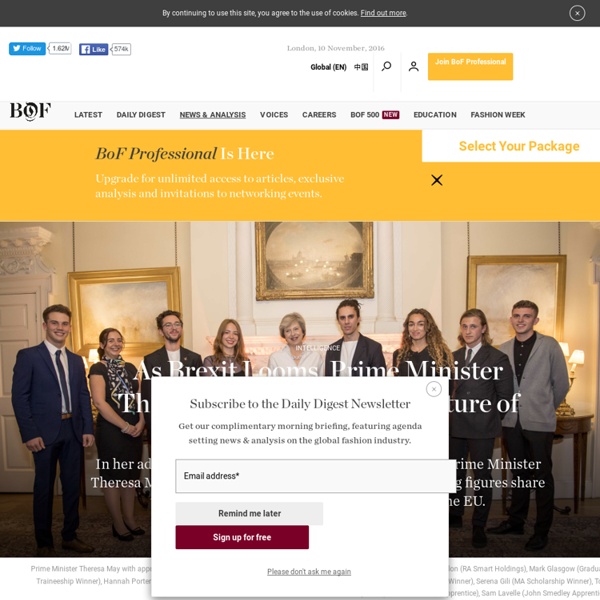As Brexit Looms, Prime Minister Theresa May Looks to the Future of British Fashion

Fashion’s most iconic political statements
As the date of the UK election draws nearer, politicians have turned their attention to fashion and pop culture in an attempt to wrest the youth vote. David Cameron has claimed Kardashian kinship, Nick Clegg has starred in an “Uptown Funk” election anthem, and the Labour Party has channelled Katharine Hamnett with their “Hell Yes” slogan tee. These recent antics come as no surprise – fashion and politics have long been linked. Last week we paid tribute to Dame Vivienne Westwood’s best protests, one of the great masters of using fashion as a vehicle for social commentary. Now we turn our attention to other designers who have used their clothes to shine a spotlight on important issues. From men’s skirts, anti-terrorist slogans and Pussy Riot films, to penises on the catwalk, feminist runway protests and reflections on wartime hardships, here are the most memorable political statements in fashion history.
Is Fashion a Credible Platform for Protest? | Opinion, BoF Comment | BoF
Vivienne Westwood Red Label Spring/Summer 2015, Jean Paul Gaultier Spring/Summer 2015, Stella McCartney | Photo Collage: BoF LONDON, United Kingdom — Last week in Paris, Chanel appropriated the visual signifiers of feminist protest for its seasonal runway show. In a finale led by Karl Lagerfeld, a bevy of supermodels took to a catwalk christened “Boulevard Chanel” holding signs with slogans such as “History is Her Story,” “Make Fashion Not War,” and “Tweed Is Better Than Tweet.” On the same day in Hong Kong, a genuine protest was underway. Protesting for the right to democratically elect a candidate of their own choosing, tens of thousands of Hong Kongers formed crowds that throbbed and swelled in the city’s streets. Playing out against this backdrop, the “faux-test” staged on Boulevard Chanel rang especially hollow, repackaging political riot as a light-hearted, Instagram-savvy performance. We think it can.
After Brexit, which way for fashion?
The impact of Brexit on the fashion industry is daunting, brain-scrambling and multi-levelled. The industry directly contributed £28bn to the UK’s economy in 2015 and employs 880,000 in roles from manufacturing to retail. For many British designers and stores, there will be an immediate hit on costs and margins. Once Brexit has been achieved, it could jeopardise design talent and retailers within the global marketplace forever. Sample the FT’s top stories for a week You select the topic, we deliver the news. During the campaign the British Fashion Council (BFC) reported that of the near-500 designers it polled, 90 per cent planned to vote for Remain. In the short term, some in the industry are happy. Luca Solca, head of luxury goods at Exane BNP Paribas, calls this positive effect “margin tailwind”. Buyers and retailers are nervous about speaking openly — they want consumers to continue shopping as if nothing has happened. Currency volatility is a huge worry. Photographs: Getty Images
Political Movements in Fashion
Can fashion have a political conscience? The question is a recurring one, and the answers are all too often clichéd. Examples of the industry’s insensitivity and lack of sympathy (or knowledge) towards social and political realities surface regularly in the media, and stories about blackface editorials and articles praising the “beauty” and “philanthropy” of the wives of Middle East dictators make the movie Zoolander look like a realistic take on the fashion world. However (and contrary to popular belief) fashion is just as often used as a social commentary. When, in 1906, Paul Poiret freed women from the corset, the couturier was immediately hailed as a pioneer of the Women’s Liberation Movement. "In an ultra-connected world where news goes instantly global thanks to the Internet, it has become impossible for designers to ignore their political conscience" “I’m not politically outspoken but I make statements regularly in my work” — Pam Hogg But do any of these questions have an answer?
Related:
Related:



